Shows at P.S. 122 and Club 57 added to the visibility Keith had gained through his subway drawings and street graffiti. Growing recognition of his work brought Keith more money and new opportunities, but it brought new pressures into his life as well.
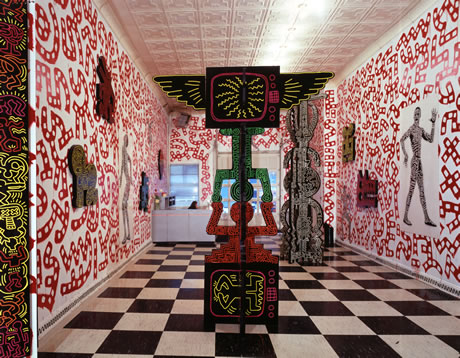
Installation Shot, Shafrazi Gallery, New York, 1982
“As an art student and being sort of in the underground and having very precise and cynical ideas about the art world, the traditional art-dealer gallery represented a lot that I hated about the art world. But people started to see an opportunity to make a lot of money buying my work. I got disillusioned with letting dealers and collectors come to my studio. They would come in and, for prices that were nothing, a couple hundred dollars, go through all the paintings and then not get anything or try to bargain.”
“I wanted to sell my paintings because it would enable me to quit my job, whether as a cook or delivering house plants or whatever else I was doing–and paint full time. But I had to have a gallery just to give me distance.”[11. Sheff, p. 63]
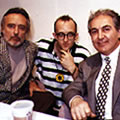 Keith decided to be represented by Tony Shafrazi,which freed him from the pressures of dealing his own work. But more importantly, representation allowed Keith to situate his artwork in the midst of large-scale cultural events.
Keith decided to be represented by Tony Shafrazi,which freed him from the pressures of dealing his own work. But more importantly, representation allowed Keith to situate his artwork in the midst of large-scale cultural events.
His first one-man show at Shafrazi in 1982 included drawings, painted tarpaulins, sculptures, and on-site work; Keith also transformed part of Shafrazi’s space into a club-like environment.
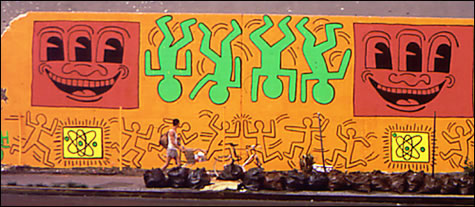
Haring’s first major outdoor mural (1982), at Houston Street & the Bowery. It no longer exists
The opening was attended by hundreds, and received a great deal of media attention. Keith continued to be energized by his love of, and increasing participation in, popular culture.
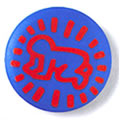 The next several years brought Keith world-wide recognition. He worked with amazing energy, and had shows in Rotterdam, Tokyo, Naples, Antwerp, London, Cologne, Milan, Basel, Munich, Bordeaux, Amsterdam, Paris and other cities, as well as numerous shows in New York and across the United States. This level of recognition brought Keith terrific opportunities for travel, collaboration and personal and artistic growth. But sometimes his phenomenal success got in the way of his work.
The next several years brought Keith world-wide recognition. He worked with amazing energy, and had shows in Rotterdam, Tokyo, Naples, Antwerp, London, Cologne, Milan, Basel, Munich, Bordeaux, Amsterdam, Paris and other cities, as well as numerous shows in New York and across the United States. This level of recognition brought Keith terrific opportunities for travel, collaboration and personal and artistic growth. But sometimes his phenomenal success got in the way of his work.
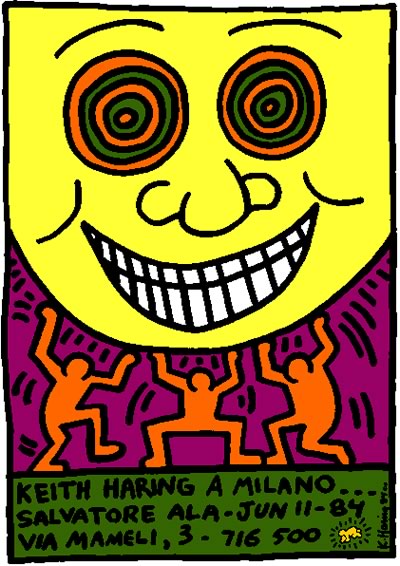
Invitation for Milan Exhibition, 1984
“By 1984 the subway [drawings] started to backfire, because everyone was stealing the pieces. I’d go down and draw in the subway, and two hours later every piece would be gone. They were turning up for sale.”[12. Sheff, p. 64]
“…[It surprised me] that the work, as early as 1982, which was before I had any exhibitions…had already spread throughout the world. People saw it as something that wasn’t really by one artist but was a vocabulary open to anyone. T-shirts appeared in Japan and sneakers in Brazil and dresses in Australia , way before I ever made any commercial object like that…”[13. Rubell, p. 56]
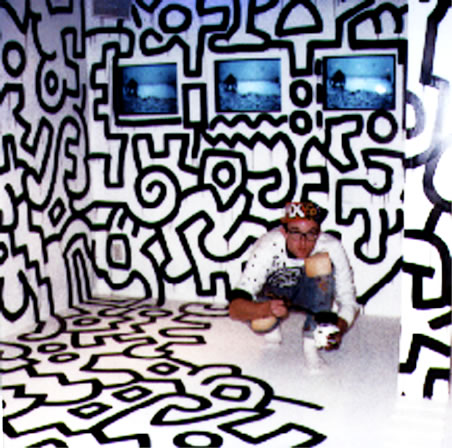
Keith Haring painting Tokyo Pop Shop
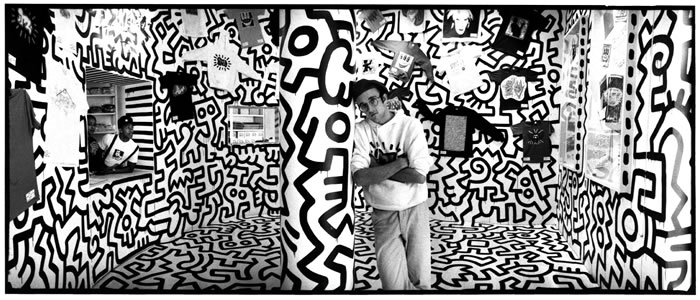
Keith Haring in Pop Shop
FOOT NOTES